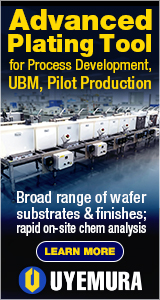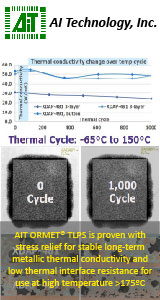|

|
|
| Ask the Experts | |||||||
|
|||||||
|
September 18, 2006 - Updated July 4, 2007 - Originally Posted Removing oxidation from partially assembled boardsIs there a way to remove the tarnish formed on white tin finished PCB's? We perform SMT assembly on some low-volume boards then store them for up to three months before applying through-hole components to order. We have seen a few orders with poor solderability due to oxidation on the white tin finish. I know how our board supplier can refinish bare boards but how can I save these partially assembled items? Jay Bosserman |
|||||||
| Expert Panel Responses | |||||||
|
Try increasing solder pot temperature and going to a more aggressive flux formulation (maybe moving from a no-clean to an aqueous). This might be an easier approach than attempting some type of rework process.
CEO & Managing Partner DfR Solutions Dr. Hillman's specialties include best practices in Design for Reliability, strategies for transitioning to Pb-free, supplier qualification, passive component technology and printed board failure mechanisms.
You may have to use a higher solids flux that is more active to remove the oxides. This could also require that you clean the boards after wavesoldering.
Senior Applications Engineer Speedline Technologies Greg joined Electrovert in February 1984. Based out of the Electrovert applications laboratory in Camdenton Missouri, Greg has been in the process applications support role since 2000. His primary responsibilities include providing process and machine applications support for the wave soldering lines as well as process, machine and operations training. He also provides applications support for the reflow and cleaner lines. Greg is a PBET certified trainer and holds two patents on wave solder nozzle design.
Tarnishing is caused by contact with the air that we breathe, or more specially oxygen. Although I am not sure of a simple way to remove it after it has occurred, I do know how to prevent it. If you put the assemblies into sealed bags and fill the bags with nitrogen prior to sealing that should stop the tarnish from forming in the first place. Use a standard ESD safe bag that can be heat sealed. There are off the shelf inexpensive systems for doing this, contact your local supplies distributor. When you are ready to assemble the board simply remove the bag.
President & CEO - Retired Bliss Industries, Inc. Retired - Mr. Bliss has 20+ years experience creating process methods that improve profitability by maximizing hidden unused capacity and throughput. Ken has expertise in all areas of manufacturing specializing in electronics assembly.
|
|||||||
| Submit A Comment | |||||||
|
Comments are reviewed prior to posting. You must include your full name to have your comments posted. We will not post your email address. |
|
Free Newsletter Subscription
Circuitnet is built for professionals who bear the responsibility of looking ahead, imagining the future, and preparing for it. Insert Your Email Address |
|

|





